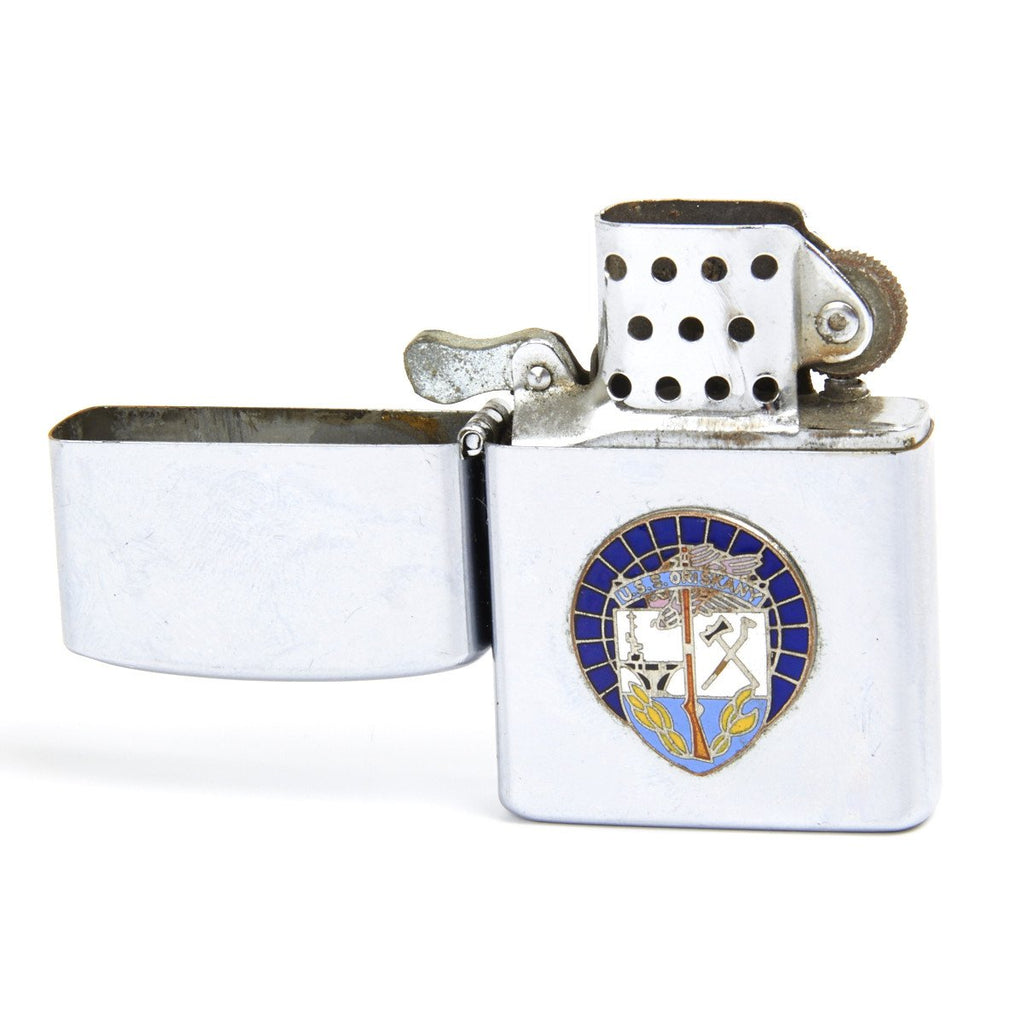-
Original Item: Lighters could be customized with regimental cyphers and engravings, and were purchased by GIs returning home as a memento of their military service in the specific theatre of operation.
Excellent vintage ZIPPO style windproof lighter circa 1951 made by KONWAL of Japan. This model is called the KONWAL "SUPER".
USS Oriskany (CV/CVA-34) nicknamed Mighty O,[1] and occasionally referred to as the O-boat was one of the few Essex-class aircraft carriers completed only after World War II for the United States Navy. The ship was named for the Revolutionary War Battle of Oriskany.
The history of Oriskany differs considerably from that of her sister ships. Originally designed as a ""long-hulled"" Essex-class ship (considered by some authorities to be a separate class, the Ticonderoga class) her construction was suspended in 1947. She eventually was commissioned in 1950 after conversion to an updated design called SCB-27 (""27-Charlie""), which became the template for modernization of 14 other Essex-class ships. Oriskany was the final Essex-class ship completed. Oriskany departed New York on 6 December 1950, for carrier qualification operations off Jacksonville, Florida, followed by a Christmas call at Newport, Rhode Island. She resumed operations off Jacksonville through 11 January 1951, when she embarked Carrier Air Group 1 for shakedown out of Guantanamo Bay, Cuba.
After major modifications at New York Naval Shipyard from 6 March to 2 April, she embarked Carrier Air Group 4 for training off Jacksonville, then departed Newport on 15 May 1951, for Mediterranean deployment with the 6th Fleet.
Having swept from ports of Italy and France to those of Greece and Turkey, from there to the shores of Tripoli, Oriskany returned to Quonset Point, Rhode Island on 4 October 1951. She entered Gravesend Bay, New York on 6 November 1951 to offload ammunition and to have her masts removed to allow passage under the East River Bridges to the New York Naval Shipyard. Overhaul included the installation of a new flight deck, steering system, and bridge. Work was complete by 15 May 1952, and the carrier steamed the next day to take on ammunition at Norfolk, Virginia from 1922 May. She then got underway to join the Pacific Fleet, steaming via Guantanamo Bay, Rio de Janeiro, Cape Horn, Valparaíso, and Lima, arriving San Diego, California on 21 July.
Following carrier qualifications for Carrier Air Group 19, Oriskany departed San Diego on 15 September 1952, to aid United Nations forces in Korea. She arrived Yokosuka on 17 October and joined Task Force 77 off the Korean Coast on 31 October. Her aircraft struck hard with bombing and strafing attacks against enemy supply lines and coordinated bombing missions with surface gun strikes along the coast. Her pilots downed two Soviet-built MiG-15 jets and damaged a third on 18 November.[4]
Strikes continued through 11 February, attacking enemy artillery positions, troop emplacements, and supply dumps along the main battlefront. Following a brief upkeep period in Japan, Oriskany returned to combat on 1 March 1953. She continued in action until 29 March, called at Hong Kong, then resumed air strikes on 8 April. She departed the Korean Coast on 22 April, touched at Yokosuka, and then departed for San Diego on 2 May, arriving there on 18 May.
- This product is available for international shipping.
- Eligible for all payments - Visa, Mastercard, Discover, AMEX, Paypal & Sezzle


We Buy Military Antiques
Our team expert buyers travels the world to pay fair prices for entire estate collections to singular items.
START SELLING TODAY






